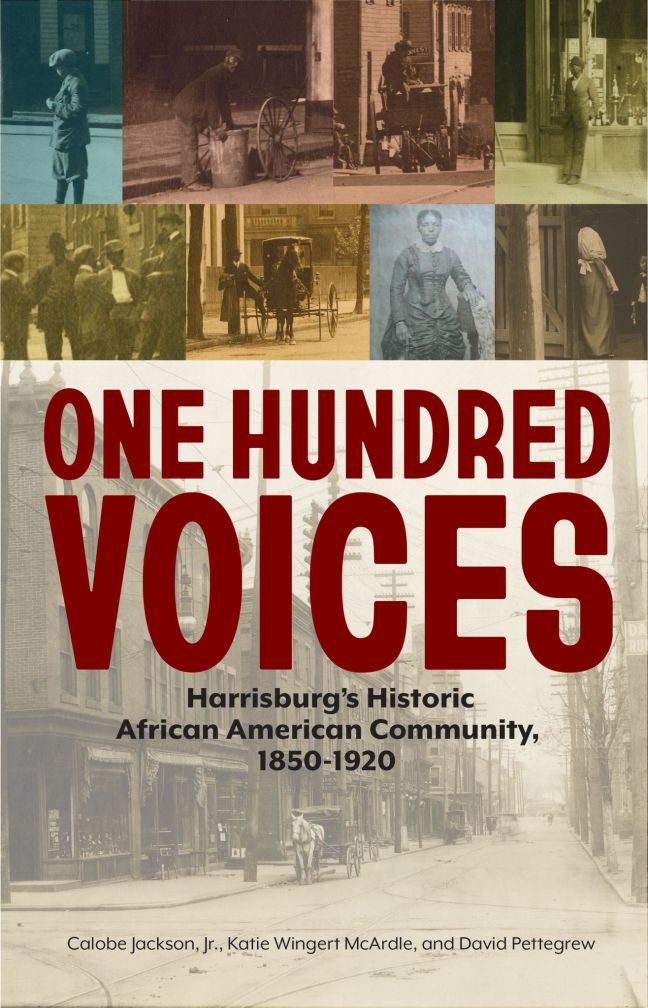The work of the Digital Harrisburg Initiative has produced dozens of faculty and student presentations and publications since 2015. Here we provide a sample of the scholarly work interpreting the history of Harrisburg and promoting the initiative.
City Beautiful & Digital Public History
This special issue of Pennsylvania History, edited by David Pettegrew and James B. LaGrand and published in winter 2020, includes twenty-one essays exploring the history of Harrisburg in the late 19th and early 20th centuries.

Contributors include historians and journalists of Harrisburg, U.S. urban historians, architectural historians, archivists, artists, digital humanists, and history students. Essays approach the City Beautiful Movement from multiple perspectives. About half include or discuss data of Digital Harrisburg. Others discuss the work of the Commonwealth Monument Project. See the press release of the Pennsylvania Historical Association to learn more. The special issue has been recognized with a PA Museums Institutional Achievement Award
Essays in the special issue that discuss or feature (in whole or in part) the work, data, or projects of the Digital Harrisburg Initiative include:
David Pettegrew and James B. LaGrand, “Harrisburg, the City Beautiful: Recasting the History of Urban Reform in a Small American Capital” (pp. 1-10) [available for free download from the PHA website]
James B. LaGrand, “Understanding Urban Progressivism and the City Beautiful Movement” (pp. 11-21)
David Pettegrew and Albert Sarvis, “The Digital Harrisburg Project: Placing the Population of a Progressive Era City” (pp. 22-44)
Albert Sarvis, “Mapping Urban Change in Harrisburg, 1900–1930” (pp. 45-65)
Kostis Kourelis and David Pettegrew, “The Greek Communities of Harrisburg and Lancaster: A Study of Immigration, Residence, and Mobility in the City Beautiful Era” (pp. 66-91)
Molly Elspas and Anna Strange, “Friends of Reform: The Correspondence of J. Horace McFarland and Mira Lloyd Dock” (pp. 122-128) with an accompanying digital collection of correspondence between reformers.
Matthew Frederick Singer, “Bellevue Park: The Suburb Beautiful and Enduring” (pp. 136-147)
Sarah Wilson Carter, “The 1918 Influenza Outbreak in Harrisburg” (pp. 148-154) [available for free download from the PHA website]
Rachel Williams, “History and Memory of the Old Eighth Ward” (pp. 164-178) [available for free download from the PHA website]
Jean Thompson Corey, “Reimagining Harrisburg’s Old Eighth Ward Through Poetry” (pp. 192-202) [available for free download here]
Andrew Dyrli Hermeling, “Look Up, Look Out: Discrepant Stories from the Old Eighth Ward” (pp. 203-211) [available for free download here]
James B. LaGrand and David Pettegrew, “Harrisburg’s Historic African American Community: An Interview with Calobe Jackson Jr.” (pp. 212-224) [available for free download from the PHA website]
Becky Ault, “The Commonwealth Memorial: A New Sculpture for the Capitol Grounds” (pp. 225-232) [available for free download here]
Lisa Krissoff Boehm, “Reframing, Rethinking, and Remembering: Considering the Digital Harrisburg Project” (pp. 233-242)
One Hundred Voices: Harrisburg’s Historic African American Community, 1850-1920
In 2020, a coalition of citizens, organizers, legislators, and educators came together to commemorate the 15th and 19th Amendments by establishing a new monument in Harrisburg, a memorial dedicated to the capital city’s significant African American community and its historic struggle for the vote. The Commonwealth Monument, located on the Irvis Equality Circle on the South Lawn of Pennsylvania’s State Capitol Grounds, features a bronze pedestal inscribed with one hundred names of change agents who pursued the power of suffrage and citizenship between 1850 and 1920. This new book is a companion to the monument. The book is available for free download or may be purchased in physical form at the Midtown Scholar Bookstore Revenue generated from the sales of the book contribute to the maintenance of the Commonwealth Monument.”
